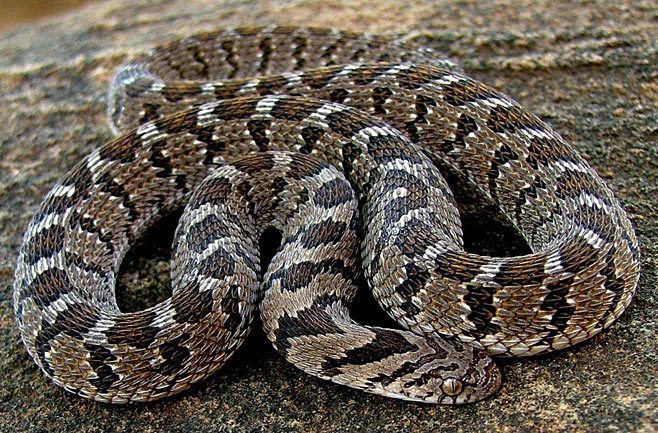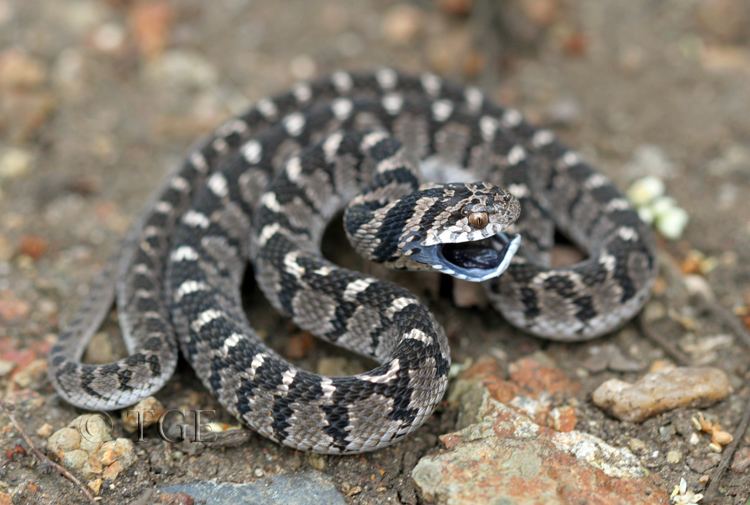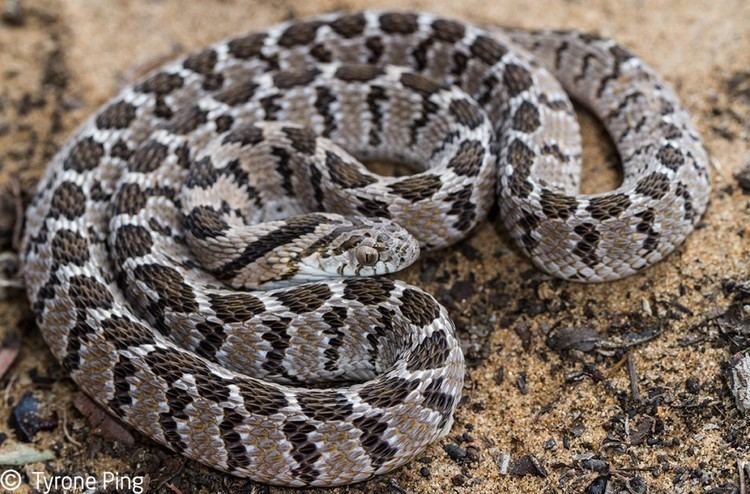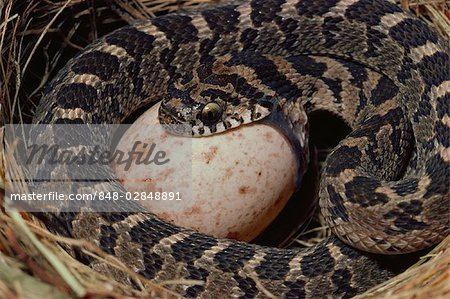Subphylum Vertebrata Suborder Serpentes Rank Species | Phylum Chordata | |
 | ||
Similar Dasypeltis, Snake, Reptile, Indian egg‑eatin, Colubridae | ||
Egg eater snake care dasypeltis scabra
Dasypeltis scabra, known as the common egg eater, egg-eating snake or rhombic egg eater, is a species of nonvenomous snake endemic to Africa.
Contents
- Egg eater snake care dasypeltis scabra
- Egg eating snake dasypeltis scabra
- Geographic range
- Description
- Mimicry
- Habitat
- Behavior
- Diet
- Defense
- Reproduction
- Subspecies
- References

Egg eating snake dasypeltis scabra
Geographic range

Dasypeltis scabra is found in sub-Saharan Africa. It can also be found in Saudi Arabia and in other countries of the Middle East.
Description

It grows to a length of 20–35 inches (51–89 cm), and has almost toothless jaws. Dorsally, it has a series of rhomboidal dark brown spots on a lighter background. There is an alternating series of brown spots on each side. Ventrally it is yellowish, either uniform or with dark dots.
Mimicry

It has been suggested that nonvenomous Dasypeltis scabra is a mimic of venomous Echis carinatus, the saw-scaled viper, which it strongly resembles.

D. scabra also closely resembles Causus rhombeatus, the rhombic night adder. These two species may be distinguished by the shape of the pupil of the eye. Snakes of the genus Dasypeltis have vertical pupils, whereas snakes of the genus Causus have round pupils. However, it is possible in darker areas for the vertical eyes to become round, so this is not a true verify.
Habitat

Dasypeltis scabra can be found in a variety of habitats. They are not found in closed-canopy forests nor in true deserts, but do inhabit most ecosystems between these extremes.
Behavior
The rhombic egg eater is nocturnal. Although mainly terrestrial, it is a good climber and is known to scale rock outcroppings and climb trees to raid birds' nests.
Diet
Dasypeltis scabra feeds exclusively on eggs. The lining of the mouth has small, parallel ridges, very similar to human fingerprints, which aid in grasping the shell of an egg. Once swallowed, the egg is punctured by specialized vertebral hypapophyses which extend into the esophagus. The shell is then regurgitated in one piece, and its contents passed along to the stomach.
Defense
When disturbed, the snake inflates itself, "hisses" by rapidly rubbing together the rough, keeled scales on the side of its body, and strikes with its mouth kept wide open.
Reproduction
This species is oviparous. In summer, a sexually mature female may lay one or two clutch of 6-25 eggs each. The eggs measure 36 mm × 18 mm (1.42 in × 0.71 in). Hatchlings are 21–24 cm (8.5–9.5 in) in total length.
Subspecies
Two subspecies are recognized, including the nominotypical subspecies.
The subspecific name, loveridgei, is in honor of British herpetologist Arthur Loveridge.
